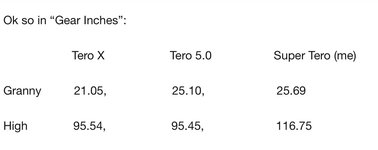Stefan Mikes
Gravel e-biker
- Region
- Europe
- City
- Mazovia, PL
My experience:
I haven't booked a demo ride on Tero X as it looks the news hit my Specialized owned LBS as a surprise They have to get the demo Tero X first. As usual, that would be the lowest spec model which will only give the rough idea. For instance, I had a chance to demo ride Tero 3.0. My impression was positive only I hated the heavy and inefficient Suntour fork* there. Then I just tried how the suspension fork worked and felt on Tero 5.0 and liked that very much.
They have to get the demo Tero X first. As usual, that would be the lowest spec model which will only give the rough idea. For instance, I had a chance to demo ride Tero 3.0. My impression was positive only I hated the heavy and inefficient Suntour fork* there. Then I just tried how the suspension fork worked and felt on Tero 5.0 and liked that very much.
-------------------
*) Because I was comparing it to the 150 mm travel Fox air-fork of my Trance E+. Honestly, even Redshift ShockStop suspension stem was giving me more comfort! I need to mention the short travel Suntour Mobie fork on my Vado 6.0 is surprisingly good but very heavy.
- A Full Suspension e-bike: No need for the suspension seat-post but a dropper seat-post is a must. Tero X has the dropper.
- Any hardtail bike will benefit from Kinekt 2.1 or Redshift ShockStop. I own both suspension seat-posts and am very happy with each.
I haven't booked a demo ride on Tero X as it looks the news hit my Specialized owned LBS as a surprise
-------------------
*) Because I was comparing it to the 150 mm travel Fox air-fork of my Trance E+. Honestly, even Redshift ShockStop suspension stem was giving me more comfort! I need to mention the short travel Suntour Mobie fork on my Vado 6.0 is surprisingly good but very heavy.
Last edited:

